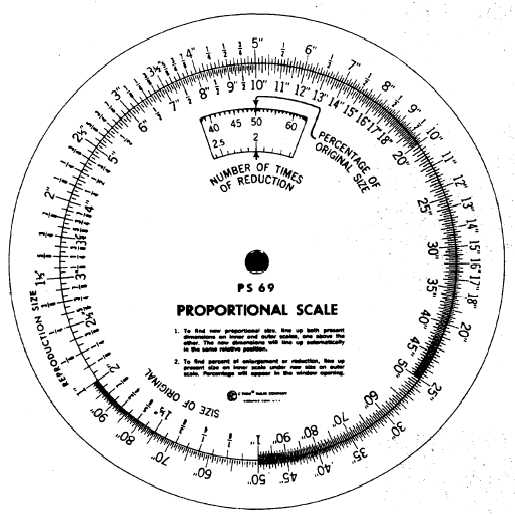Figure 8-14.—Proportional scale.
4. Draw a broken vertical line at a right angle from
it to the diagonal line as before. Extend the diagonal line
to meet the broken line.
5. Complete the rectangle and measure the space.
This is the area your photograph will occupy when it is
enlarged.
The Proportional Scale Method
Perhaps the most common way of scaling is the
proportional scale method. The proportional scale
(fig. 8-14) has a movable inner disk with a window
mounted on an outer disk. Both disks have unit
graduations from 1 to 100. Any unit of measurement can
be used with the proportional scale.
To use the scale, you need to know three of the four
measurements involved in scaling. You must know the
cropped width, cropped depth and reproduction width
(or the reproduction depth if you are establishing a
reproduction width.
Use your proportional scale to determine the
reproduction depth in the following example:
PHOTOGRAPH DIMENSIONS: The cropped
width is 18 picas and the cropped depth is 4 inches. It
will be used in a one-column, 13.5 -pica-wide space.
STEP 1: Align the cropped width (18 picas) on the
inner disk, with the reproduction width (13.5 picas) on
the outer disk.
STEP 2: Find the cropped depth (4 inches) on the
inner disk and read the reproduction depth opposite it
on the outer disk. The reproduction depth is 3 inches.
8 - 15


